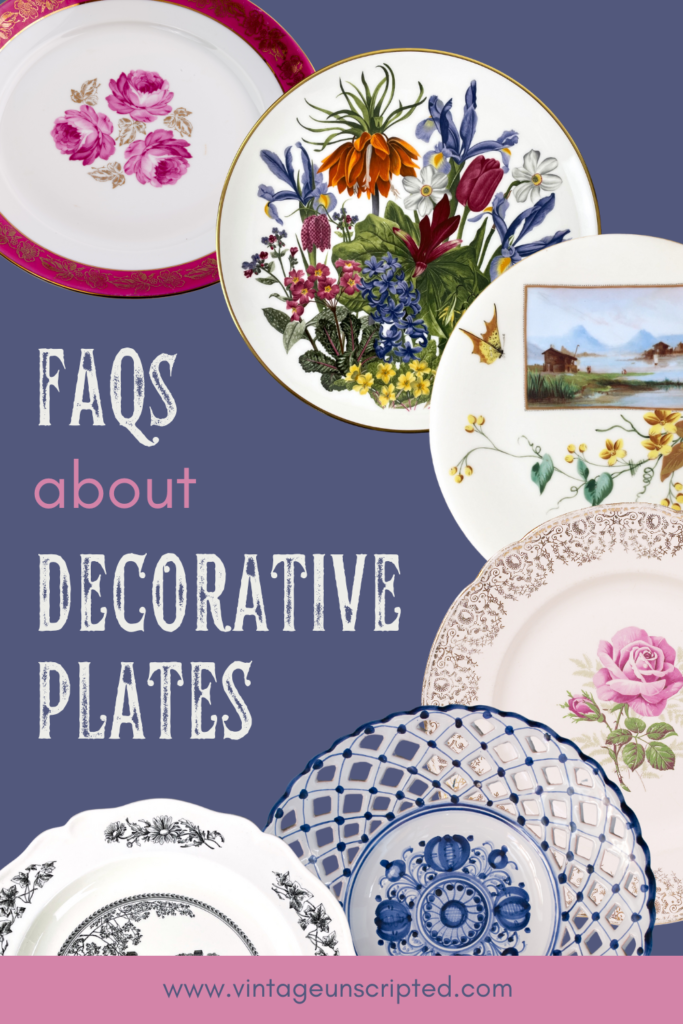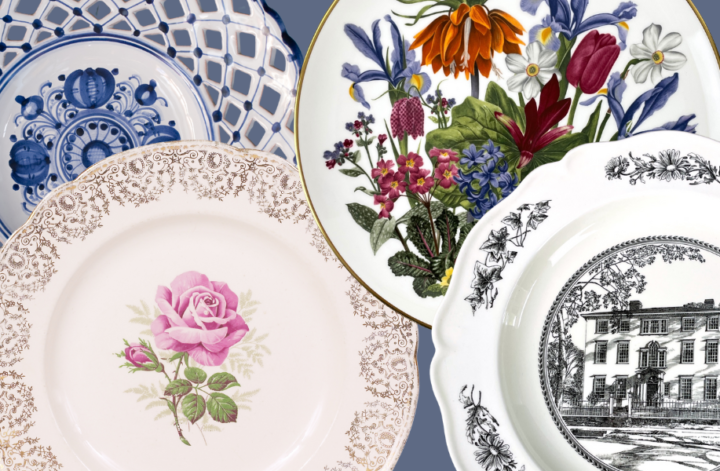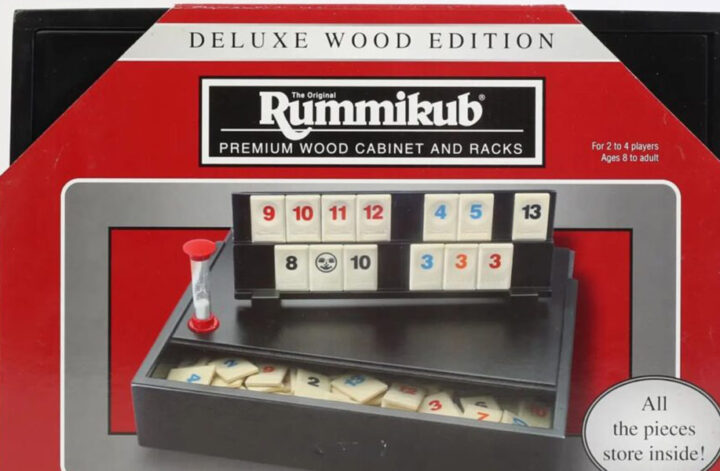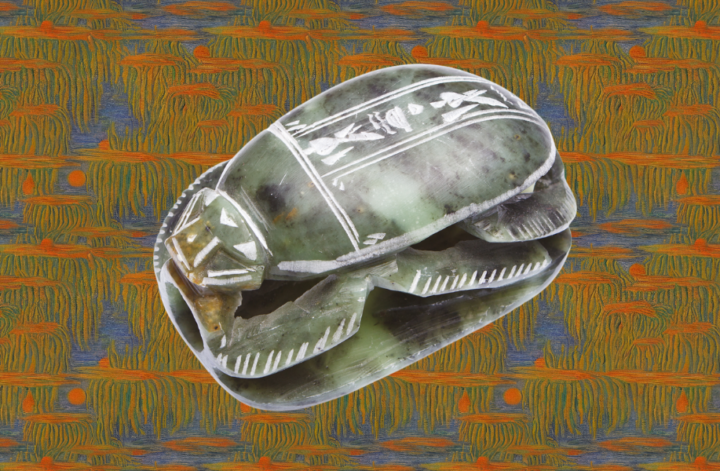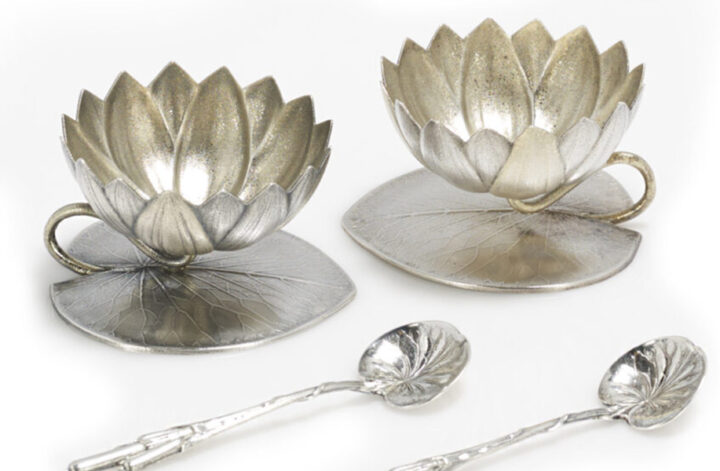Decorative plates are satisfying decor pieces. The round shape and the sheer balance of the design make them irresistible, at least to some of us. Whether you love the romance of the regency era, the kitsch of the 1950s or the mod graphics of the 1970s, you can find plates that fit your style in antique stores, online shops, flea markets and thrift stores.
Putting together a collection of decorative plates is a sport. Start with one that speaks to you and then hunt and gather others that fit your design motif. A less exciting but also less time consuming route is buying an “instant collections” of plates from an online seller. If you’re a minimalist, a simple grouping of complementary plates may be all you need. If you’re a maximalist, you might need scads of plates, hung so they cover one wall, overlap and spill their way onto the next wall.
But this post isn’t about how to decorate with plates. Nor is it about high end art and antique plates, which can be worth thousands of dollars. It’s about garden variety plates you find on the vintage market and things you might wonder about them. You may have questions about them, heaven knows we often do, so this is an attempt to answer some common ones.
What are cabinet plates?
Cabinet plates are highly ornamental antique or vintage porcelain plates that were intended for display only and never intended for table use. They often feature ornate borders and center designs, which may have hand painted details. Gold gilt details are also common. Prices for these can range from $30 or less to multiple thousands depending on age, condition, scarcity and manufacturer.
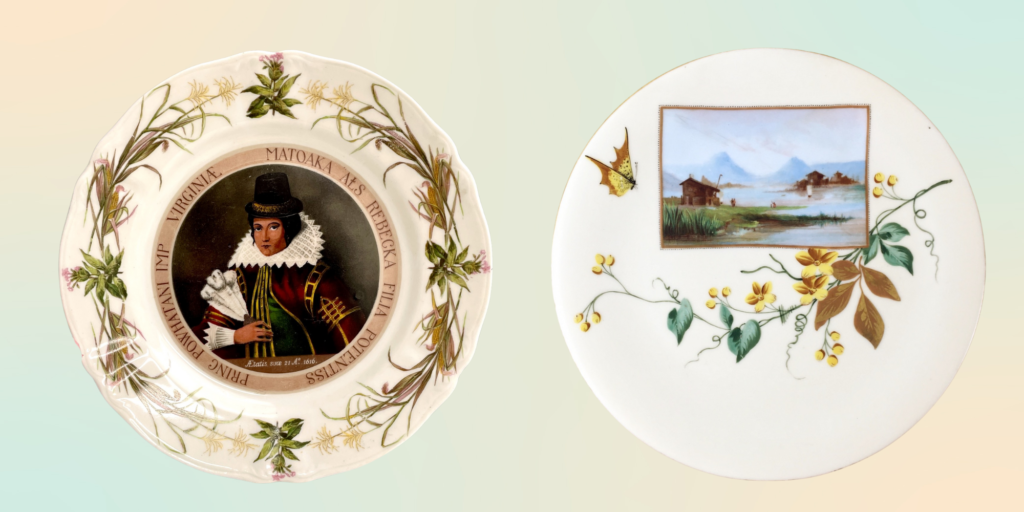
Are decorative plates a good investment?
The companies that make these collectible decorative plates would like you to think so, but for the vast majority, resale value, even with box and certificate of authenticity, is marginal compared to the original purchase price. Most collectible decorative plates are lovely and are excellent quality, but that doesn’t seem to matter on the resale market.
It’s always worth checking the value of a plate because there are outliers. Modern Bing and Grondahl and modern Royal Copenhagen annual Christmas plates are not high value. But some of the antique plates from those makers can sell for enough to finance a weekend away.
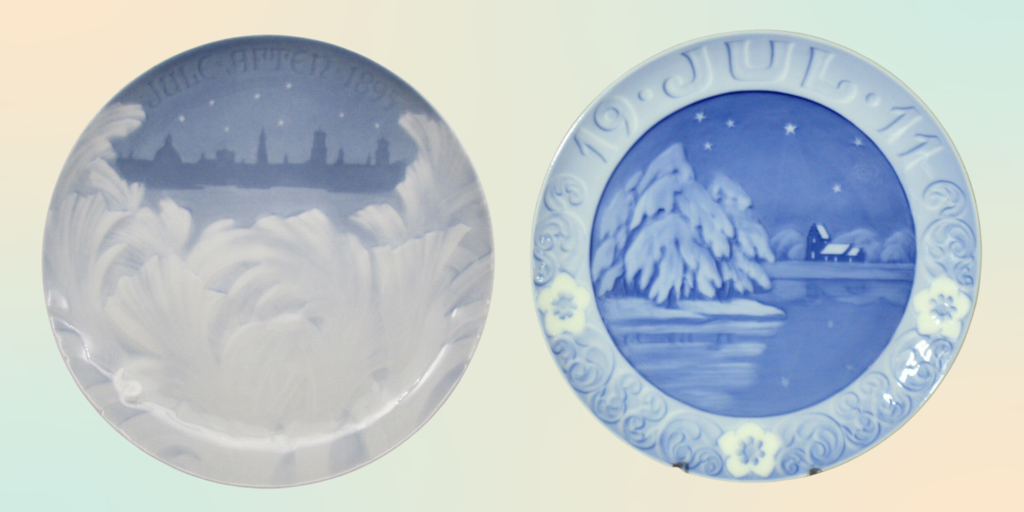
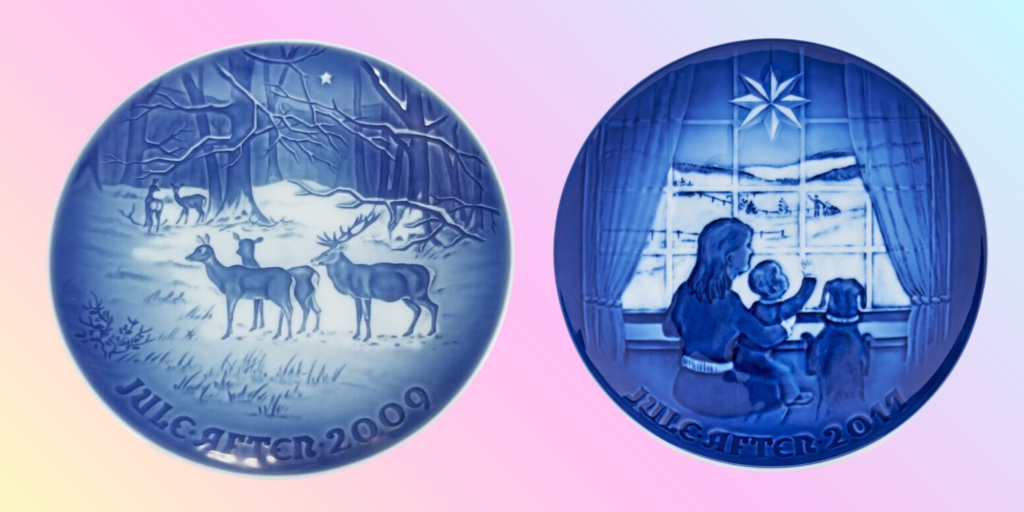
The absolute reining champion of plates with no resale value are Norman Rockwell plates. It is statistically impossible to take a trip to any thrift store in the US and not lay hands on a Norman Rockwell plate. We love his art and were moved to tears at his museum, but man, has his brand been diluted. Rockwell’s art was reproduced on everything, too far and too wide, saturating the market. Many of the nostalgic images on plates are not appealing to the millenial buyers. Checking completed Rockwell listings on eBay, some plates are unsold at 99¢, a bundle of 17 plates sold for $180 and the very small number of the hundreds of plates with completed listings that actually sold individually went for $20 – $40. Don’t be fooled by the listing price of some Rockwell plates. You can list a plate for whatever you want. Look at the actual sold prices. We can’t explain the 1980s Knowles “The Music Maker” plate that sold for $825, because we know it can be thrifted for $5 or less. (There are some weird pieces like that, including some Beanie Babies that sell for scandalous amounts on eBay. It smells crimey, but we don’t know what scam is.)
But the marketing materials said these plates were limited edition and numbered and would increase in value…
There is a special circle in hell for marketers who hype up the value of something that is not a good investment vehicle. As sellers, we mention in our listings that things are signed and numbered, but our pricing is based on actual market value and not perceived future value. That being said, again, most of these pieces are very nice quality and make excellent decor, and appreciating them in your home adds value to your life that can’t be calculated in dollars.
Are there any other outliers?
There are always outliers. Two of the Little House on the Prairie plates from Royal Manor Porcelain with art by Eugene Christopherson have sold for excellent prices. A third, by the same artist but a different maker, sold for less. The maker of the plate as well as the size are variables for determining resale price.
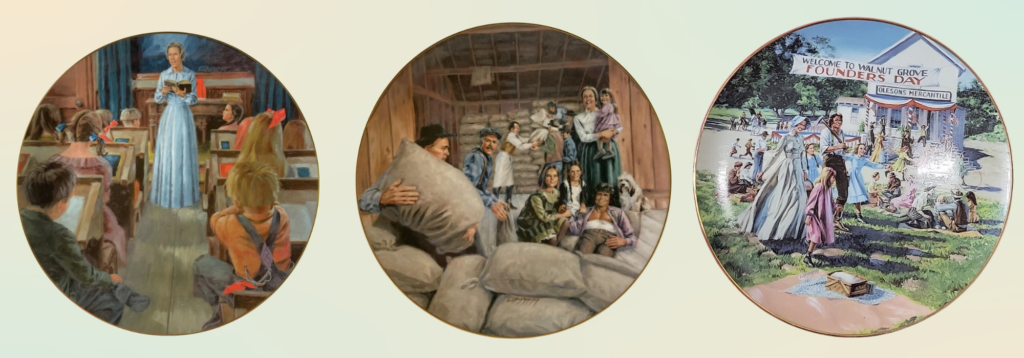
Makers of fine china, like Wedgwood, also make decorative plates. Depending on subject, sold prices cover a wide range.
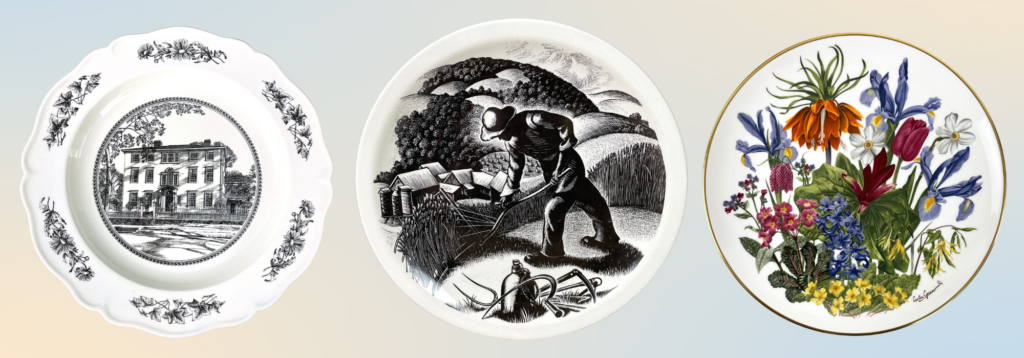
A quick search of Bradford Exchange plate sales on eBay showed that complete sets sell for between $100 and $400. The highest priced individual plate sold was “Birth of a Queen-Titanic: Queen of the Ocean,” the 2001 15th issue of the series, at $150. Most individual plates were sold between $1 and $40.
It is always worth the time to check the value of a decorative plate as a reseller, those moments when you find an outlier are so adrenaline filled you can’t help but live for them.
How do you check the value of a plate?
The easiest way is to use the advanced search on eBay and check completed listings. This will tell you how many have sold recently, how many have not sold and what the sale price is.
Should you save your original boxes?
If you have space and can store them in a way that won’t deteriorate from moisture or excessive heat, it’s fine to keep them. But don’t feel obligated, especially if you are buying the plates to enjoy them as decor.
Can you use souvenir or decorative china as dinnerware?
Probably not. Printed and decal decorated plates do not have a clear coat glaze that covers the design, meaning they might have dangerous chemicals that would get into your food. In theory, transferware could probably be used as tableware, but I wouldn’t recommend it on general principle. Many decorative plates are marked “for decoration only.”
Does crazing matter on a decorative plate?
Not unless you’re going to sell the plate. You’re not eating off it, so the crazing is not dangerous. It only matters if it offends your sensibilities.
How do you clean decorative plates?
Plates get dusty and if they are near enough to the kitchen, the dust can combine with the grease that floats through the air. Always start with the gentlest method possible. A damp, not wet, microfiber cloth can be a good first start. If that’s not enough, move up to Clorox wipes (we don’t trust any other brand). Unless a plate is clearly glazed so all the design is protected by a clear coat, it’s best not to submerge it. Tread lightly with hand painted plates. If you’re at all aggressive with your cleaning, you can wipe the design right off cold painted plates.
If a plate is crazed, proceed with extreme caution while cleaning. The cracks don’t go all the way through, but they do go through the clear coat glaze and can allow moisture to seep inside that stays visible and does not dry out. Don’t ask how we know. We don’t talk about that anymore.
To remove adhesives from labels, we use Goo-Gone and something gentle and blunt like a popsicle stick unless the surface is glazed and then we use a straight razor. This will also remove permanent marker (mostly) and grease pencil. However, we don’t ever use it on unsealed surfaces like Wedgwood jasperware or stoneware, not because we’ve had a horrible experience but because we’re afraid we will have a horrible experience.
How do you hang decorative plates?
For plates with relatively flat rims, a metal hooks with springs hanger is fine. Look for the ones that have vinyl sleeves that slip over the hooks, as over time the metal can leave permanent rust stains on the edge of the plate. If the plate has a cupped rim, it will stick out from the wall if you use the spring type hanger, so your best choice is one of the hangers that mounts on the back. Many vintage plates will come with a fabric tab with a metal loop that is glued to it. I don’t trust these for hanging plates, even though I have tried nuclear level technology to try remove them and not succeeded.
Do you have more plate questions? Do you have plate answers? Leave them in the comments section!
Postscript on Little House plates: the original paintings done by Eugene Christopherson went missing for 35 years. Where are they now?
